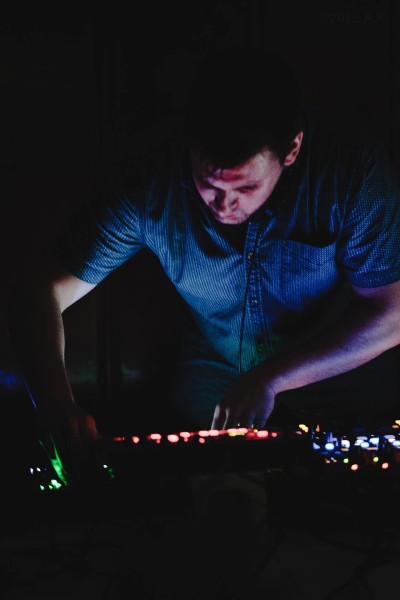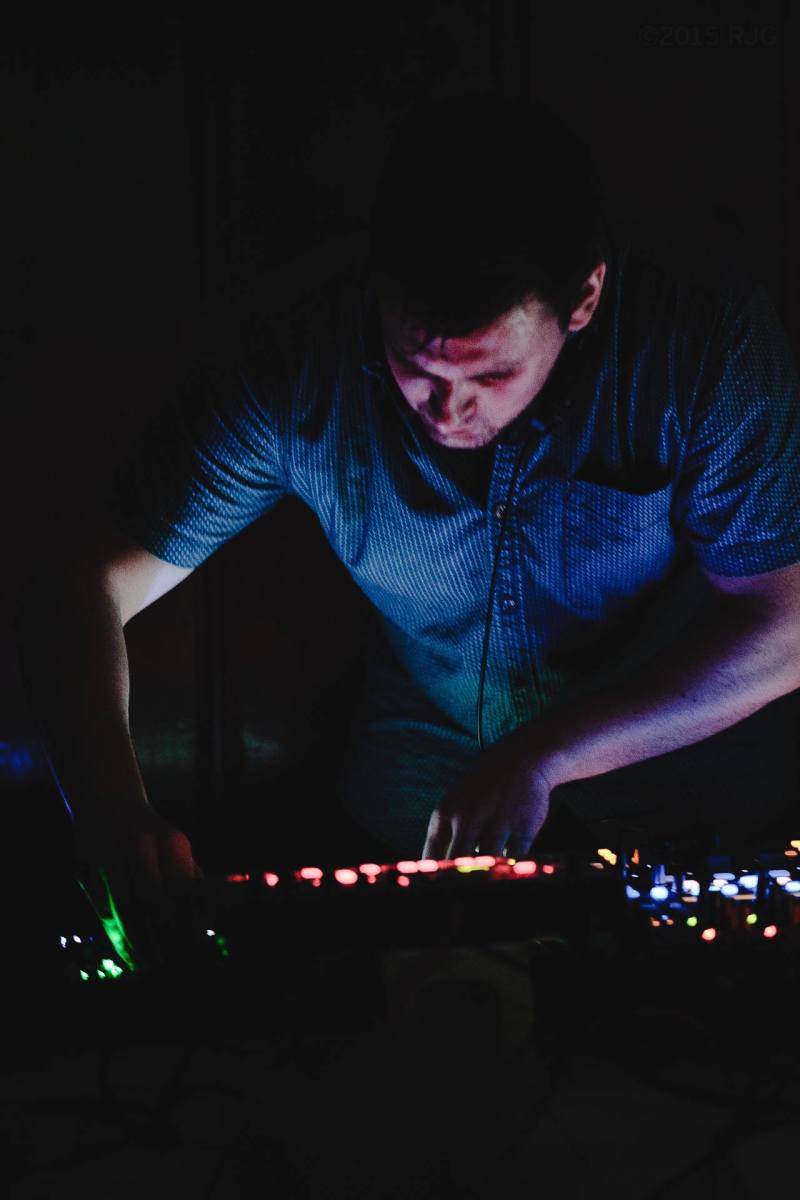This is the goal that David Grunzweig B.S. ’14 M.A. ‘16, also known as T∆PE GHØST, lays out when describing his most recent album, “[ ]” (pronounced “blank”). Like his previous projects, “[ ]” is experimental, danceable and, much like the title, wordless.
The total lack of lyric or letter throughout the album represents Grunzweig’s complete focus on the sonic. One could say this reflects his life as a DJ, composer and student of Stanford’s Center for Computer Research in Music and Acoustics (CCRMA). At CCRMA, he combines an electrical engineering background with his musical prowess to build new human-music interfaces and explore new mediums of sound.
Before turning his focus to his solo projects, Grunzweig played guitar for a student band, Acid Jazz Cabin. His rich jazz training is evident throughout the album, despite the fact that he sticks almost entirely to vintage synths and Roland TR drum machines for instrumentation. In his own words, a background in jazz allows him “to spend less time on chord changes and melody lines and spend more time on timbres and atmospheres.”

It’s exactly this sort of attention to detail that makes Grunzweig stand out. On “[ ],” each note is rendered with careful thought, with as much consideration given for the classic musician’s concerns of melody, harmony and rhythm as for the texture, weight and transience of the sound.
In true techno fashion, Grunzweig often holds a single melodic pattern constant while manipulating the line’s interactions with bass synths and syncopated percussion. On the closing track, “Daybreak,” an arpeggiating melody is drawn through a series of changing feels, every change produced by a subtle manipulation of texture or counterpoint.
There are also moments of cacophony, wherein a pattern is built and established only to be rattled by arhythmic percussions before breaking into a more intense refrain (see the opening track, “LA2Ø19”). But these moments don’t last long, and the effect is always to bolster the strong dance beats that lie at the heart of the album.
Grunzweig’s chosen name, T∆PE GHØST, is itself a reference to the immortal potential of recorded audio. More faithful than memory yet still incomplete without the context of its creation, recorded music lingers for lifetimes. While never quite live, per se, it always remains receptive to our own projections of life. This is the ghostly nature that Grunzweig seeks to capture.
“[ ]” epitomizes this philosophy by fitting no specific narrative, instead offering itself up to anyone who can connect to its driving beats, cinematic movements and sonic complexity. The wide-open realm of interpretation Grunzweig creates gives his music a more robust immortality in the sense that it will never suffer the loss of its original narrative, simply because it has none to begin with.
You can stream and download “[ ]” at tapeghost.bandcamp.com/album/-.
Contact Benjamin Sorensen at bcsoren ‘at’ stanford.edu.

![T∆PE GHØST's explorations of sound as eternity 1 The album artwork for "[ ]," designed by Eiji Nasu. (Courtesy of David Grunzweig)](https://stanforddaily.com/wp-content/uploads/2016/01/12636896_10154381225655016_702872177_o-600x600.jpg)